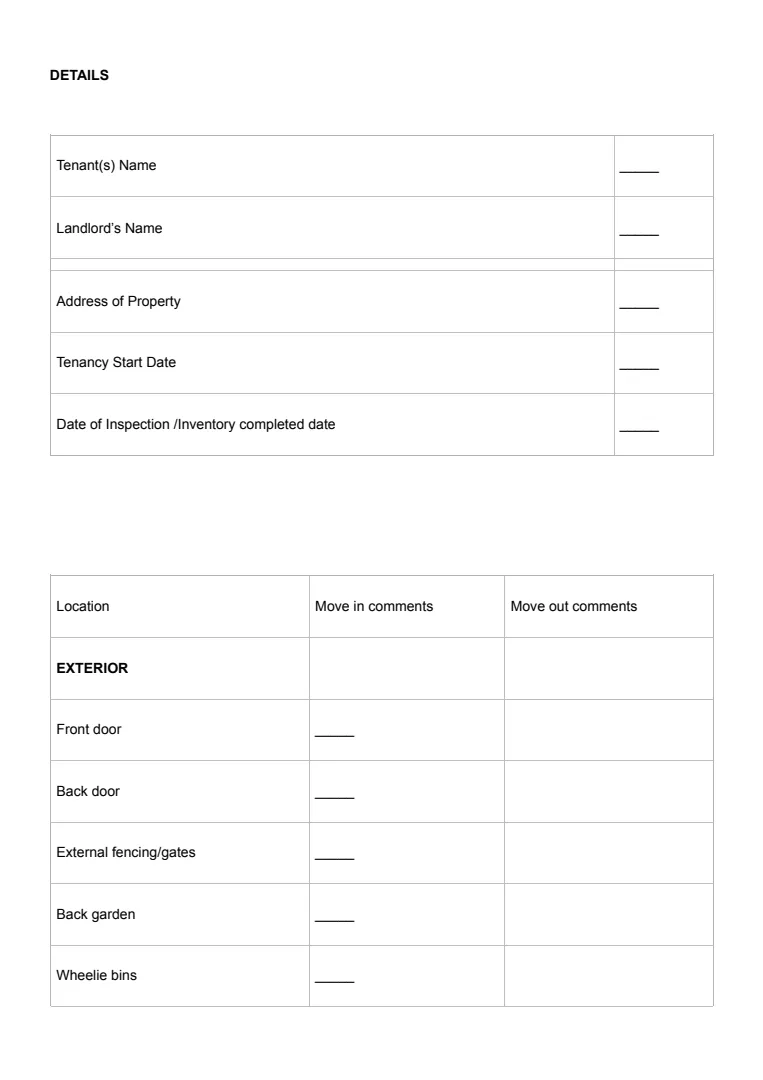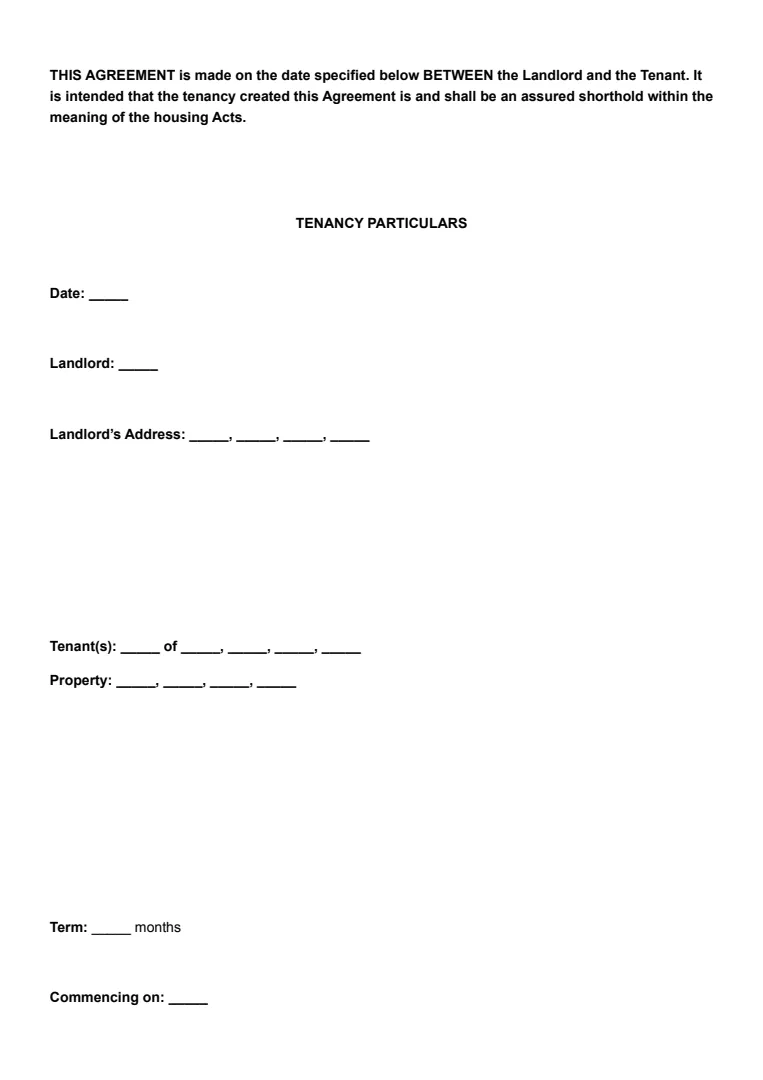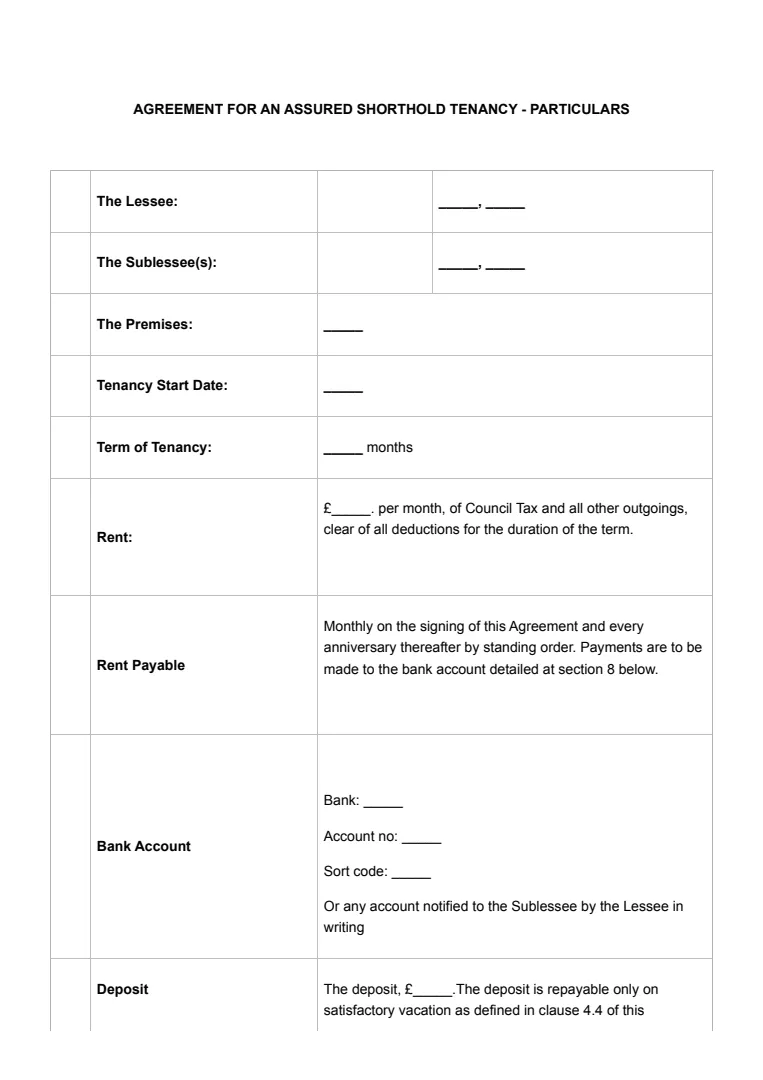What Is a Rental Property Inventory?
If you’re a landlord, a rental property inventory is your best friend when it comes to keeping track of what’s in your rental property. Think of it as a detailed checklist that captures the contents and the condition of everything within your property.
If you’re a tenant moving into a new rental, you should receive an inventory documenting all the items within the home – anything from sofas to blinds – with a description of their state.
Whether you’re a landlord or a tenant, a rental property inventory is important. It’s not just a list; it acts as a record to avoid disputes later. If something like a coffee table gets scratched, both parties know exactly how it was at the start of the tenancy agreement and what’s changed.
A good property inventory covers all areas, inside and out. From the living room to the garden shed, nothing escapes its attention. Some of the elements included in the inventory should be:
- Furniture: Tables, sofas, chairs
- Appliances: Fridges, microwaves
- Fixtures: Light fittings, kitchen/bathroom sinks
- Condition notes: Scratches, stains, general wear and tear
The inventory isn’t just handy during the moving-in period, but it's also important when the tenant is moving out. It’s all about having proof of what the property looked like at different stages of the tenancy.
So, whether you’re a tenant or a landlord, having this document in place is a real game-changer, ensuring everyone’s on the same page and avoiding unnecessary disputes.
When Is a Rental Property Inventory Needed?
If you’re a landlord, you should conduct a rental property inventory at several key points during a tenancy. Most importantly, performing an inventory before a new tenant moves in is essential. This helps you document the property's condition and contents from the start.
Next, carrying out an inventory during periodic inspections is a good practice. These inspections allow you to check for any changes or damages and ensure everything matches the original inventory. Regular inspections help prevent disputes by keeping both parties informed.
Lastly, an inventory is crucial when a tenant moves out. This final check helps you compare the property's condition to when the tenant moved in. It can reveal any damages or missing items and is vital if there’s a need to discuss repair costs or hold back any deposit.
Sometimes, you might need another inventory if there’s been a significant change to the property, like renovations or new furnishings. This keeps your records up to date and accurate, reducing the potential for misunderstandings.
How to write a Rental Property Inventory
Creating a comprehensive rental property inventory doesn't have to be overwhelming. Follow the steps described below, and you’ll have an effective tool that benefits you and your tenant.
Step 1: Get a Property Inventory Template
Start by obtaining a blank property inventory template. This serves as your framework and helps ensure you cover all necessary details.
You can find several versions online, so choose one that suits your property's needs.
Step 2: Describe Each Room
Begin in one corner of the property and systematically go through the property, describing each room. Include details such as wall colours, flooring type, and ceiling condition.
Be specific and consistent. For instance, note any cracks or marks on walls to help prevent future disputes.
Step 3: List Fixtures and Fittings
Document every fixture and fitting, such as light fittings, built-in wardrobes, and kitchen cupboards.
An accurate record of these elements is crucial to the integrity of your inventory. Mention the condition of each item and any manufacturer details if available.
Step 4: Document Furniture and Appliances
If your property is furnished, inventory every piece of furniture and appliance. List items like sofas, beds, refrigerators, and ovens. Describe their condition and include model numbers when possible.
Bill these items into an inventory checklist for clarity.
Step 5: Photographic Evidence
Taking clear, date-stamped photographs provides visual evidence to support your written descriptions. Photograph from multiple angles and include close-ups of any damage. This step increases the reliability of your property inventory report.
Step 6: Professional Help
If you want an unbiased record, hiring a professional or independent inventory clerk might be advantageous. They provide expertise and ensure your inventory is thorough and compliant with regulations.
Step 7: Final Check and List
Compile all information into your inventory document, ensuring each room and item is accounted for.
A final review can determine if any corrections or additions are needed before the tenant moves in.













